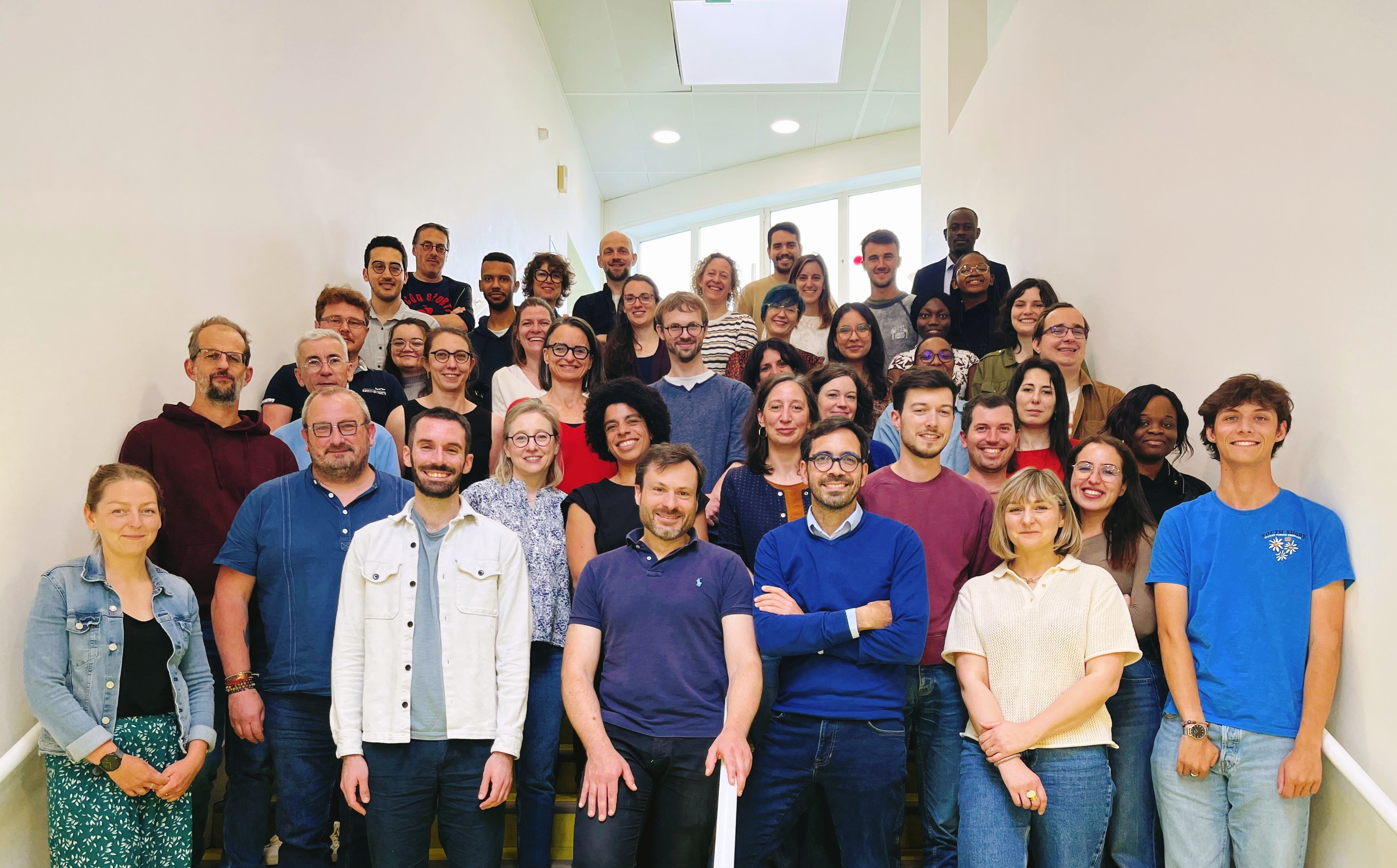
SPHERE Summer Science Day in Tours
On Thursday 5 June 2025, all the members of SPHERE met up in Tours!
The morning's programme included a review of the unit's flagship projects over the last few years, which gave rise to a wide range of discussions. 🗣️
After a convivial lunch, the afternoon was devoted to presentations on a variety of subjects:
🧑🎓 Presentation by new doctoral students of their thesis topic
🔎 Scientific projects or work (interdisciplinarity in the context of end-of-life care, creation of a well-being and safety scale for patients ventilated in intensive care, or patient-centred assessment criteria for evaluating post-resuscitation syndrome)
👦News from the unit's Young Researchers group
🌏Feedback from the ecological transition working group
A day rich in discussions and exchanges!
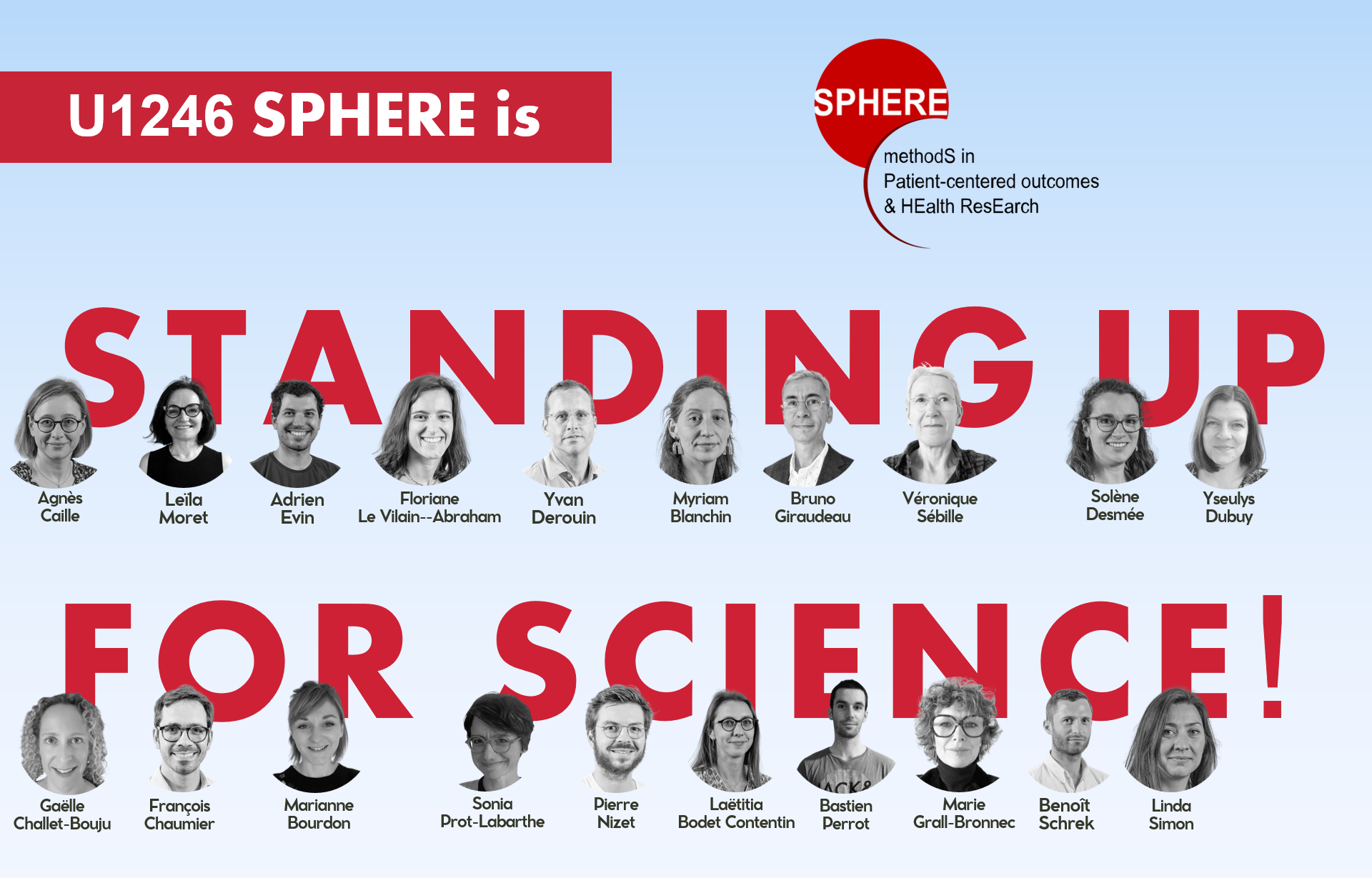
SPHERE expresses its deep commitment to academic and scientific freedom and the dissemination of knowledge and supports the 'Stand Up for Science' movement
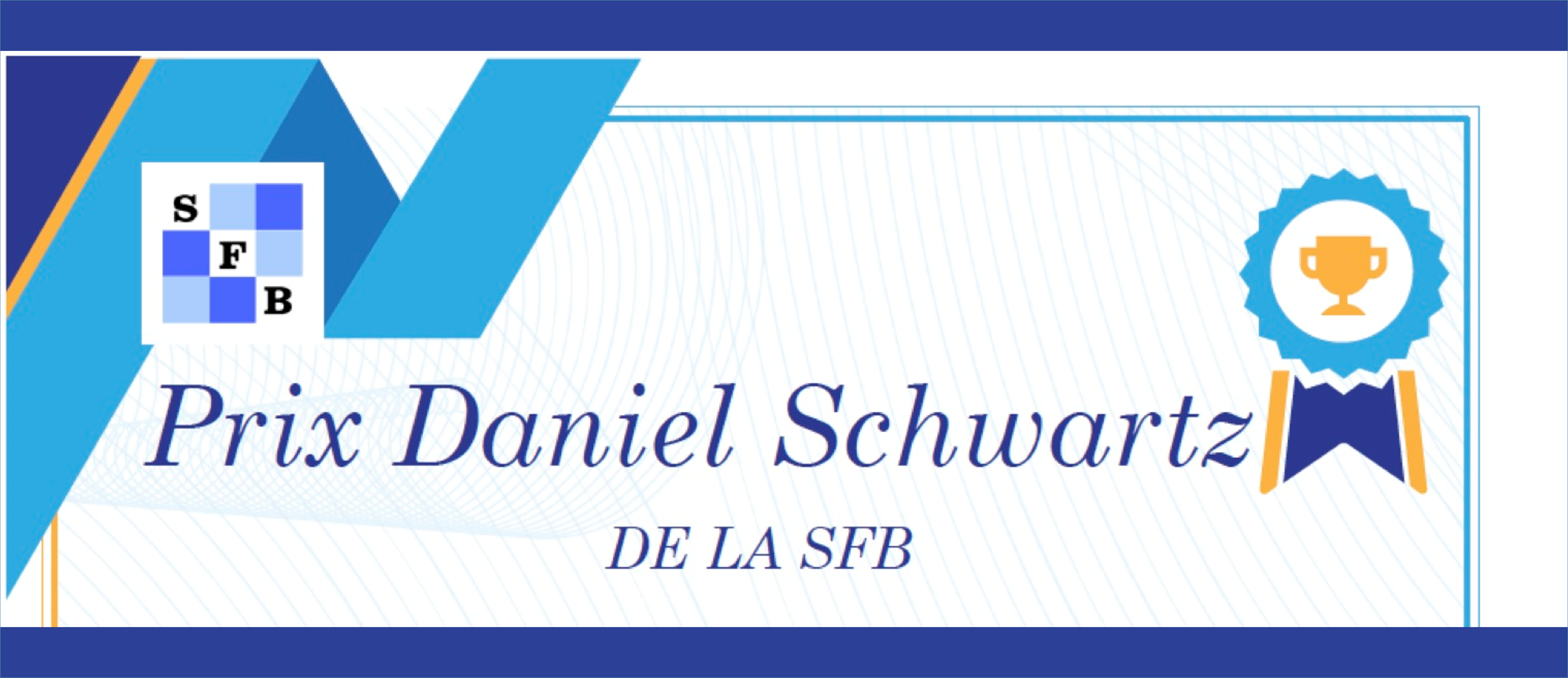
Arthur Chatton and Marion Kerioui received the 2022 Daniel Schwartz award for their thesis !
The 2020-2022 thesis prize «Daniel Schwartz», founder of the French Society of Biometrics, French component of the International Biometric Society (IBS), was awarded to two spherian doctoral students: Arthur CHATTON and Marion KERIOUI
They were invited to present their research at the Journée Jeunes Chercheur.e.s of the Société Française de Biométrie, held in Rennes on 19 January 2023.
Congratulations to both of you!
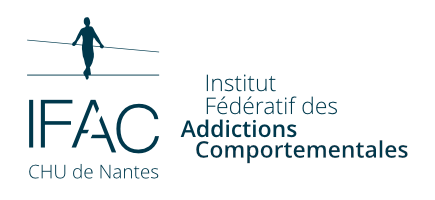
The CONGA project obtaind funding from AOI CHU Nantes + ANR résilience COVID
Both in France and Sweden, global changes in online gambling activities due to the COVID-19 pandemic, and their potential for gambling problems, are a source of concerns for public health authorities. The CONGA project aims to measuring the impact of the COVID-19 pandemic on the online gambling activity, both in France and Sweden. The use of gambling tracking data, widely acclaimed in recent years in research on online gambling given its ecological nature, could allow observing longitudinally changes in online gambling activities due to the pandemic. Moreover, the combination of French and Swedish data will allow comparing two countries with very distinct politics regarding the pandemics, i.e. a lockdown in France compared to no lockdown in Sweden. The CONGA study will provide a better understanding of the impact of restriction measures in the context of the health crisis on online gambling activities. Moreover, the identification of sub-populations particularly at risk of increasing their gambling activity in response to the health crisis will have both clinical and epidemiological perspectives, even beyond the current period of crisis.
Principal investigator: Gaëlle Challet-Bouju
The project NABAB recently obtained a national PHRC funding
Behavioural addictions (BAs) [gambling disorder (GD), food addiction (FA), sexual addiction (SA)] may lead to disastrous consequences. They are often associated with other addictive or psychiatric disorders, and high rates of suicide attempts. Epidemiological studies report prevalence reaching 2.7% for GD, 5% for SA, and up to 7.9% for FA.
Many similarities have been highlighted between BAs, as well as with substance use disorders. One core clinical similarity between those disorders is craving (uncontrollable urge to engage in rewarding behaviours), which has been consistently associated with diminished control over the behaviour and relapse.
Whereas cognitive behavioural therapies have demonstrated their efficacy for the management of BAs in the short-term, the extent and durability of their effects are still unknown. Drop-outs are frequent, as well as relapses, with for example more than 70% of patients presenting recurrence of gambling behaviour at 12-months follow-up.
At present, no pharmacological treatment has been approved for BAs, but several medications have been tested. Among them, two opioid receptor antagonists - naltrexone and nalmefene - appear the most promising. By decreasing dopamine neurotransmission in the reward circuitry, they reduce both excitement for rewarding behaviours and craving.
Compared to naltrexone, nalmefene seems to have a better safety. To date, no study investigated the efficacy of nalmefene as a pan-addiction treatment for BAs. Two clinical trials have demonstrated its efficacy for the treatment of GD, but no clinical trial was conducted for FA and SA.
We hypothesise that nalmefene (36 mg/d), compared to a placebo, can have a therapeutic effect as an add-on to usual treatment for decreasing craving in several BAs. The NABAB study could therefore lead to the development of guidelines incorporating a drug option for treating BAs. The project will also investigate the genetic predictors of therapeutic success, which may improve knowledge on the genetic determinants of the nalmefene action.
Nalmefene holds a marketing authorization at the dosage of 18 mg/d in France for alcohol use disorder only. The choice of the dosage tested in this study (36 mg/d) results of a balanced decision between efficacy (demonstrated at 40 mg/d) and safety (poor from 50 mg/d), as observed in the two trials on GD. Moreover, our study will comprise “real-life” conditions: (i) patients who are often excluded from clinical trials on addiction, i.e. females, patients with psychiatric/addictive comorbidities and concomitant substance consumption, or treated with concomitant psychotropic medications, provided that nalmefene is not contraindicated; (ii) all therapeutic goals, either regaining control over the addictive behaviour or achieving abstinence. This may favour the applicability of the treatment in real-life and the generalizability for all patients that could benefit from it.
The provision of well-tolerated and inexpensive drug treatment would allow easier accessibility to care, for example in primary care such as general practice, and in the management of patients who have difficulty engaging in specialized care.
Principal investigator: Marie Grall-Bronnec
Bruno Giraudeau obtained a new ANR project: ESCIENT !
Complex interventions include several components that may interact with one another. In health service and public healthresearches they are often assessed with cluster randomized trials, which randomize intact social units. In these trials, whichpopulation is to be analyzed is a challenging issue. The boundary between lack of compliance and adaptation of the intervention tothe context is tenuous; participants may lack compliance because of their own willingness, or because of external events; becausethe intervention may be adapted to the context, an “as treated” population is also of interest. We definitely need guidelines on thisissue. On a statistical point of view, such trials are also challenging. While an adjusted risk difference is the preferred way ofexpressing results, classical statistical analyses usually return odds ratios. We presently lack clear recommendations on the optimalstatistical method to be used. The ESCIENT project aims to close these two gaps.
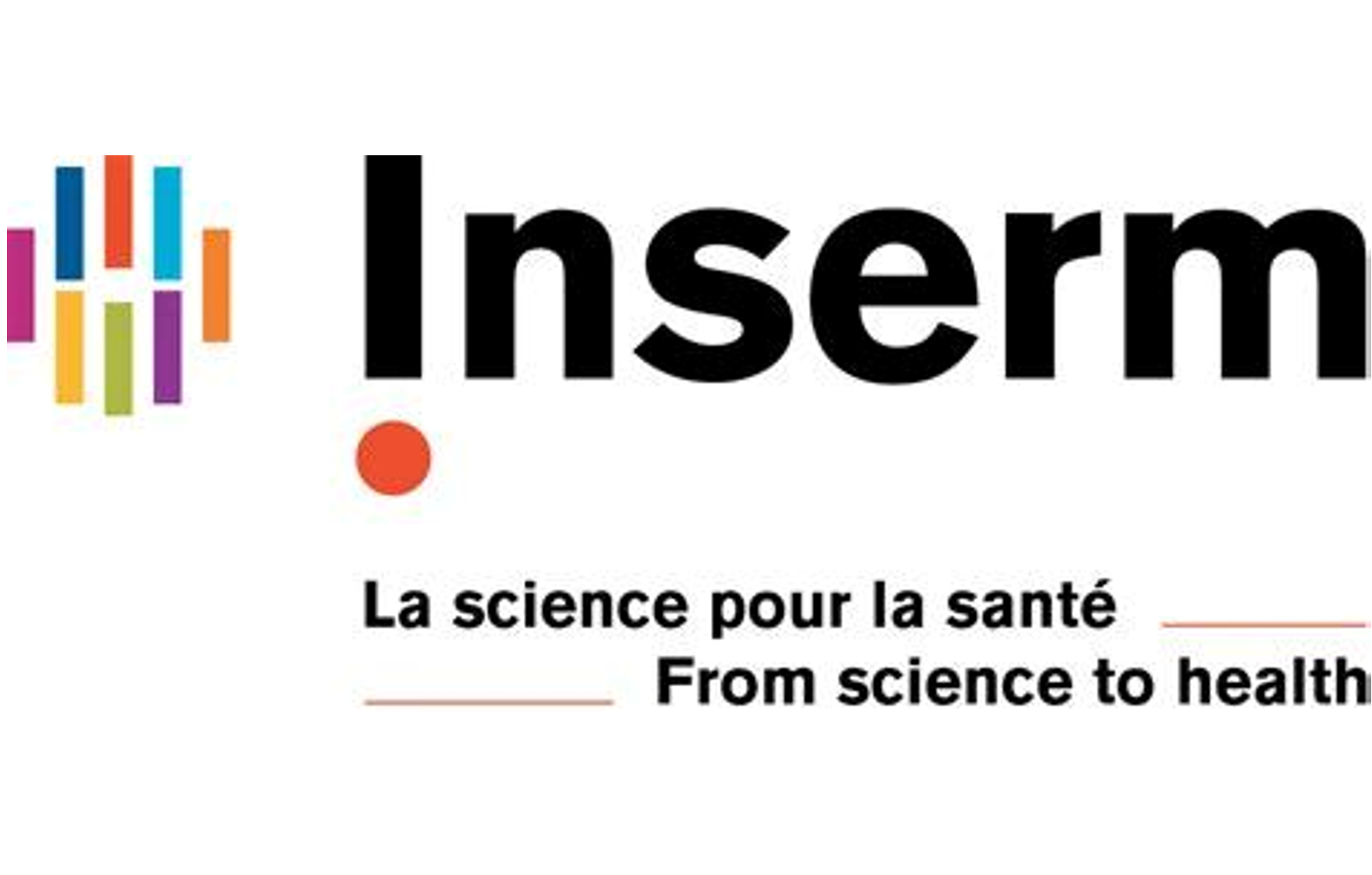
Two pages on SPHERE in the latest issue of Inserm, Le magazine!
Public Health: Consider the entire patient sphere
pages 12-13
 @Sphere_U1246
@Sphere_U1246